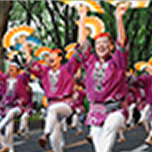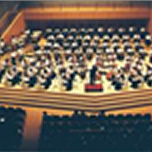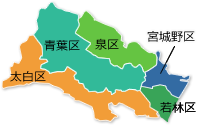![]() ホーム > Sendai City Official Website > About Sendai City > History
ホーム > Sendai City Official Website > About Sendai City > History
Page ID: 17178
Updated: January 31, 2017
ここから本文です。
History
The Warrior who Established Sendai(as his castle town)
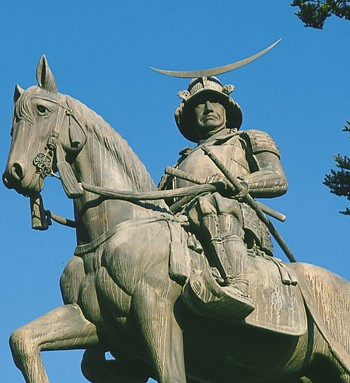 Date Masamune, the first lord of the Sendai Clan (Han), established the foundation of Sendai. In 1600, Masamune started to build his castle in Sendai and implemented new plans regarding the layout and development of the city. The city became so prosperous that a Spanish Ambassador described it as being busier than Tokyo.
Date Masamune, the first lord of the Sendai Clan (Han), established the foundation of Sendai. In 1600, Masamune started to build his castle in Sendai and implemented new plans regarding the layout and development of the city. The city became so prosperous that a Spanish Ambassador described it as being busier than Tokyo.
Even today, you can see a panoramic view of Masamune's visionary town planning from the ruins of his castle. The modern urban planning found in present-day Sendai would not have been possible without the urban heritage from its great founder.
The Keicho Mission to Europe
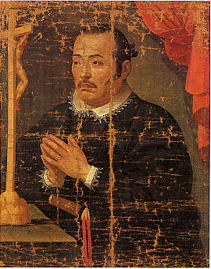 In 1613, during the Keicho era, Date Masamune dispatched a mission to Europe to establish trade and invite missionaries. The mission was lead by Masamune's retainer, Hasekura Tsunenaga, and embarked upon the San Juan Bautista, a western-style sailing ship constructed by the Sendai Clan. The delegation crossed the Pacific, landed at Acapulco, Mexico, and set sail upon the Atlantic Ocean to Madrid and Rome, which made them the first Japanese to cross the Atlantic. The mission was granted an audience with Pope Paul V after arriving in Italy. The journey home sent the mission through Spain and the Philippines. It took almost seven years to complete the journey. This was one of the most remarkable events in the history of Sendai.
In 1613, during the Keicho era, Date Masamune dispatched a mission to Europe to establish trade and invite missionaries. The mission was lead by Masamune's retainer, Hasekura Tsunenaga, and embarked upon the San Juan Bautista, a western-style sailing ship constructed by the Sendai Clan. The delegation crossed the Pacific, landed at Acapulco, Mexico, and set sail upon the Atlantic Ocean to Madrid and Rome, which made them the first Japanese to cross the Atlantic. The mission was granted an audience with Pope Paul V after arriving in Italy. The journey home sent the mission through Spain and the Philippines. It took almost seven years to complete the journey. This was one of the most remarkable events in the history of Sendai.
Site of Sendai Castle
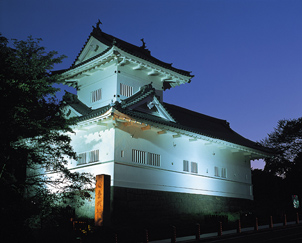 Date Masamune built Sendai Castle on a natural stronghold 115m above sea level. Although its original buildings were destroyed by a fire, the stone walls and reconstructed guard house still remind us of its glorious days.
Date Masamune built Sendai Castle on a natural stronghold 115m above sea level. Although its original buildings were destroyed by a fire, the stone walls and reconstructed guard house still remind us of its glorious days.
Recent excavations and research have revealed three distinct periods in the stone walls. The stone walls have been repaired and restored to their original form, as a valuable cultural and historic resource. Sendai is making an effort to retain its historic sites through its urban planning. The City is now planning to further improve the Site of Sendai Castle as a symbol of Sendai.
Osaki Hachiman Shrine
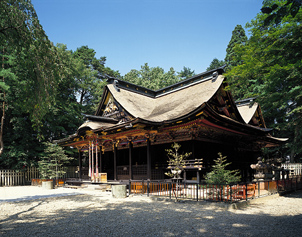 The Osaki Hachiman Shrine was built to protect the Sendai Clan and was completed in 1607. The main building is designated as a national treasure and is decorated with dazzling metal ornaments and colors upon black lacquer. The Donto-sai Festival is held at the shrine every year on January 14, where people burn new years decorations for a safe and healthy year.
The Osaki Hachiman Shrine was built to protect the Sendai Clan and was completed in 1607. The main building is designated as a national treasure and is decorated with dazzling metal ornaments and colors upon black lacquer. The Donto-sai Festival is held at the shrine every year on January 14, where people burn new years decorations for a safe and healthy year.
Sendai City Museum
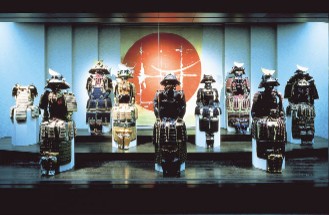 The Sendai City Museum shows the history of Sendai by displaying various cultural heritages, mainly from the Date family. Its collection is composed of over 75,000 artifacts, which include national treasures and important cultural properties. Approximately 1,200 artifacts from its collection are usually on exhibit.
The Sendai City Museum shows the history of Sendai by displaying various cultural heritages, mainly from the Date family. Its collection is composed of over 75,000 artifacts, which include national treasures and important cultural properties. Approximately 1,200 artifacts from its collection are usually on exhibit.
Zuihoden
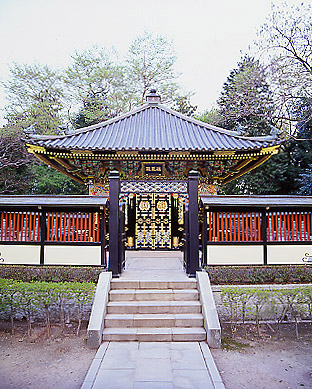 The Zuihoden Mausoleum is the tomb of Date Masamune. This splendid mausoleum was reconstructed in its original ornate Momoyama architectural style.
The Zuihoden Mausoleum is the tomb of Date Masamune. This splendid mausoleum was reconstructed in its original ornate Momoyama architectural style.
お問い合わせ
Copyright©City of Sendai All Rights Reserved.
